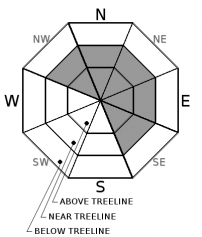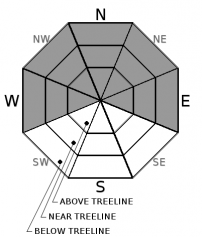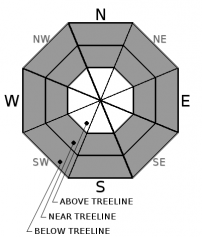| Monday | Monday Night | Tuesday | |
|---|---|---|---|
| Weather: | Cloudy with snow | Cloudy with snow showers | Cloudy with snow showers in the morning. Snow becoming more widespread in the afternoon. |
| Temperatures: | 20 to 25 deg. F. | 12 to 17 deg. F. | 23 to 28 deg. F. |
| Mid Slope Winds: | Southwest | Southwest | Southwest |
| Wind Speed: | 20 to 30 mph with gusts to 65 mph | 20 to 30 mph with gusts to 65 mph decreasing to 55 mph after midnight | 10 to 15 mph with gusts to 40 mph |
| Expected snowfall: | 3 to 6 | 2 to 5 | 2 to 5 |
| Monday | Monday Night | Tuesday | |
|---|---|---|---|
| Weather: | Cloudy with snow | Cloudy with snow showers | Cloudy with snow showers in the morning. Snow becoming more widespread in the afternoon. |
| Temperatures: | 15 to 21 deg. F. | 8 to 13 deg. F. | 20 to 25 deg. F. |
| Ridge Top Winds: | Southwest | Southwest | Southwest |
| Wind Speed: | 30 to 45 mph with gusts to 95 mph | 30 to 45 mph with gusts to 85 mph decreasing to 75 mph after midnight | 20 to 35 mph with gusts to 80 mph |
| Expected snowfall: | 3 to 6 | 2 to 5 | 2 to 5 |



























